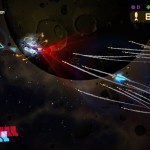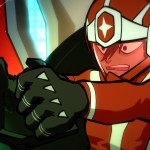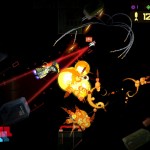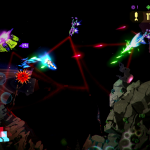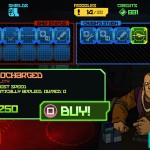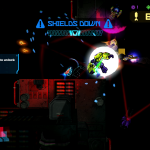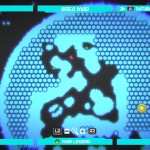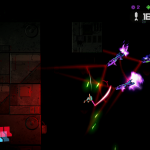 If you were old enough to have watched shows like Robotech and became a fan, chances are high that you’ve always yearned for a game that captured the essence of that series in videogame form. Unfortunately for Western gamers, they have been deprived of such an experience for a ridiculously long time. Now enter 17-bit, with Galak-Z. While there have been a handful of mecha games in recent years, none of them took the experience of space combat into account. Galak-Z attempts to do this, and mostly succeeds. There are a few odd design choices that hinder it a bit though.
If you were old enough to have watched shows like Robotech and became a fan, chances are high that you’ve always yearned for a game that captured the essence of that series in videogame form. Unfortunately for Western gamers, they have been deprived of such an experience for a ridiculously long time. Now enter 17-bit, with Galak-Z. While there have been a handful of mecha games in recent years, none of them took the experience of space combat into account. Galak-Z attempts to do this, and mostly succeeds. There are a few odd design choices that hinder it a bit though.
The game is set up like an old mecha anime from the late 70’s and early 80’s. Your protagonist is a young amateur pilot named A-Tak, which is actually a short hand of his full name. Escaping the destruction of his fleet at the hands of an ambush by the alien race his organization is at war with, he comes into contact with one of the last ships still around the area. After getting in touch with acting commander Beam, he is sent on various missions to fix their ship and re-establish communications with HQ. Taking your Galak-S fighter ship, you have to do various things like kill space bugs, retrieve tech, or what have you. The game plays out in ‘Seasons’ with five missions in each. Dying at any point means restarting the entire season over; unless you play on arcade mode, where you have unlimited chances to continue between missions. But you still will lose any money or upgrades earned. You do at least keep upgrades unlocked for purchase at the shop. The game is very difficult however, as getting a handle on the physics of the 2D space you occupy is a quite the learning curve. At least the controls are responsive. The player can boost, juke, use reverse thrusters, fire guns, and use lock on missile barrages. Later on you can strafe around an enemy to avoid fire. There are upgrades that can help you out but you only get to keep them as long as you don’t die before the next mission. Others are unlocks for purchase at the shop.
The problems in the game begin to surface here. Money is often hard to come by, and repairs to your ship’s health are hard to come by. You have a shield that can only take two hits, although it can regenerate. Taking a hit during this downtime though will reduce your health by one, and repairs in the shop are expensive, and you can only repair a single unit at a time. And your health doesn’t restore between missions either. You could grind for money, but considering that missions don’t have checkpoints within the levels themselves, it’s a risky preposition. Perhaps if there was a Rookie difficulty setting that allowed for that, it wouldn’t be such a problem, but currently there is no such option. Starting from season 2, you get the ability to transform into a giant mecha form. It has a shield, a sword, and a grappling hook that can reel in enemies for you to either bash , use as makeshift shields, or to throw at other enemies or hazards. These parts of the game are satisfying, but the game is still difficult. Especially since any of the upgrades you pick up in a season don’t carry over into the next.
The seasons themselves do have some story segments, but the randomized missions are actually a part of a pre-set number of possible levels. This level progression system leaves the game’s narrative a more than a bit disjointed and there’s rarely a chance to learn about the game’s universe. The voice acting is acceptable, but it can get a bit annoying after a while. The artwork on the character models during a run is decent, but the actual design of characters like A-Tak and Beam are a bit lacking, not truly capturing the art style of the era that the game is trying to recreate. The little filtering effects on the pause screen that resemble a barely functioning VHS tape are a nice touch though. Music is mostly done to set the mood, and the game is mostly ambient. The game is fun when those moments of awesome like slamming an enemy into a wall of spikes happens, but hard core rogue-like nature will turns off many players. I just hope that the developers are receiving feedback which can either be used to improve the game or put into a follow-up title. 17-bit is on to something here, and I’d love to see it blossom.
Gameplay
Graphics
Sound
Overall

